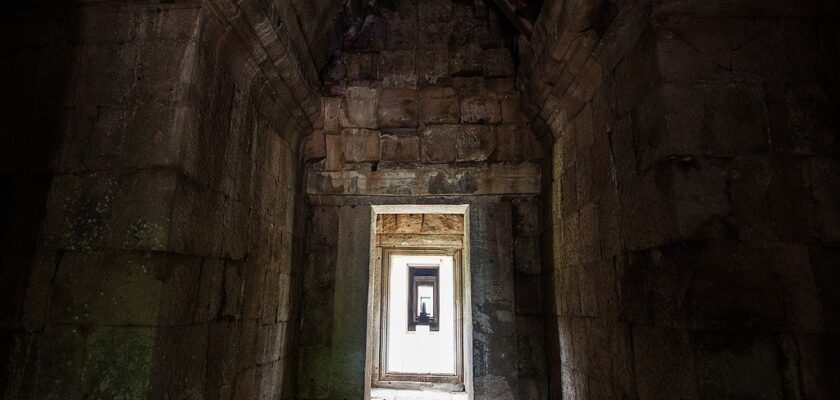Wat Phanom Rung
Wat Phanom Rung (Wat Prasat Phanom Rung) is one of the most significant Khmer structures in Thailand. Along with the ruins of Phimai, Phanom Rung is an important shrine and stopping point on the route between Angkor, the capital of the Khmer kingdom in what is now Cambodia, and Phimai. The wat sits on top of a 158-meter-high hill, overlooking a plain to the north and densely forested mountain slopes to the south.
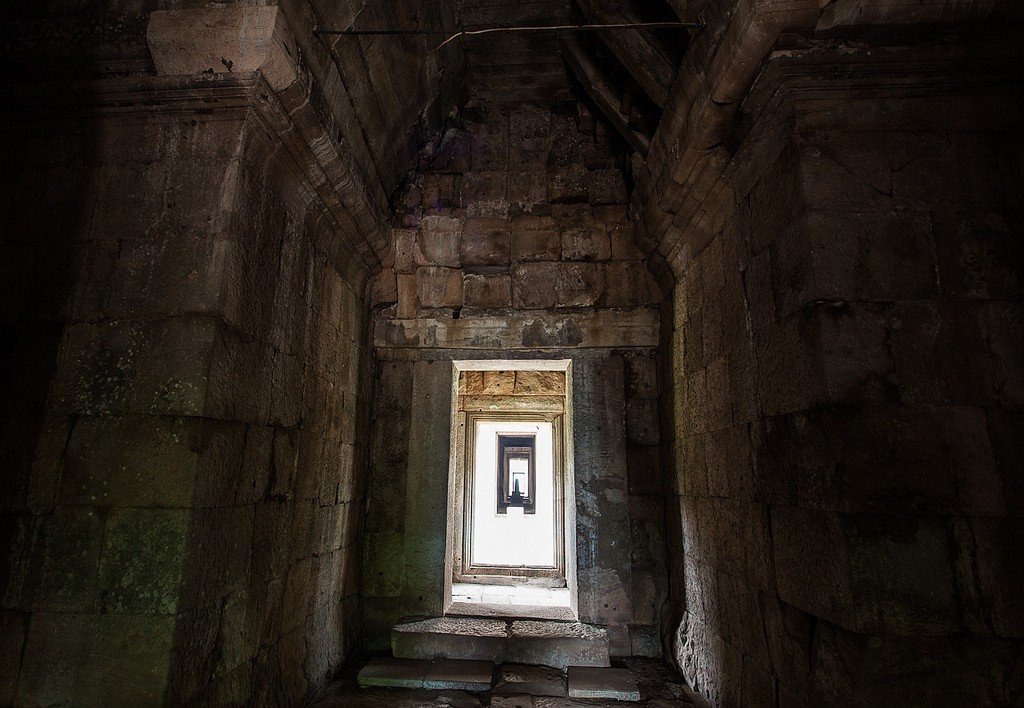
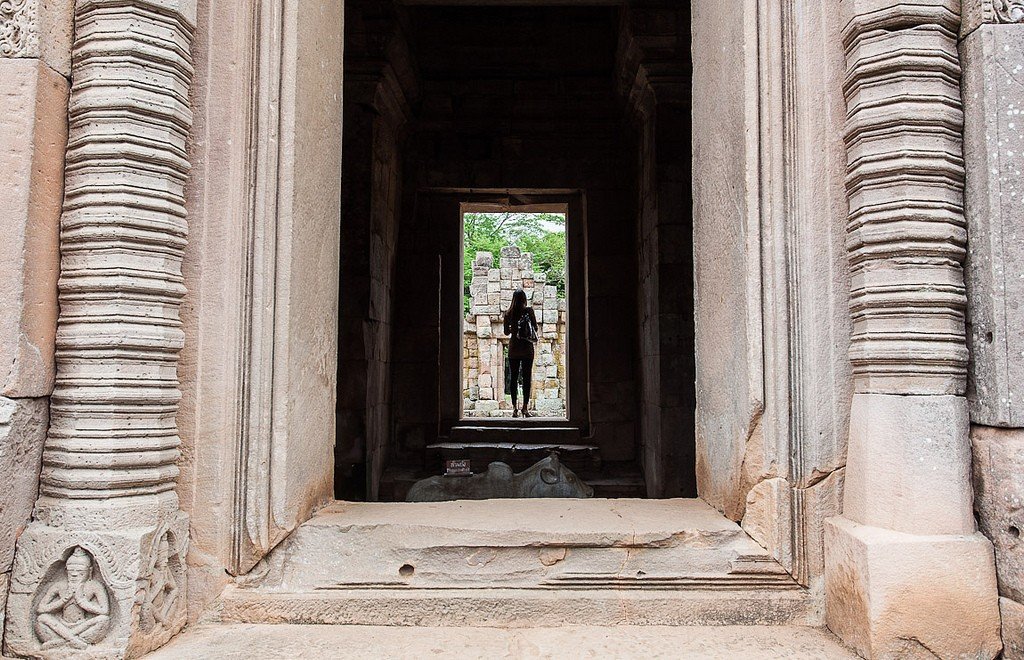
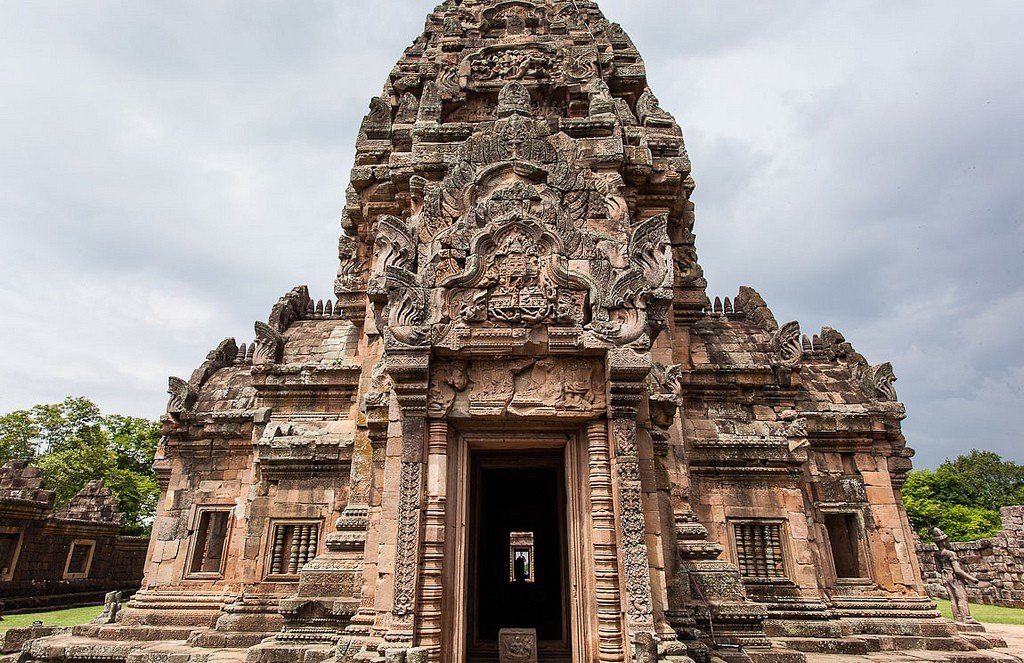
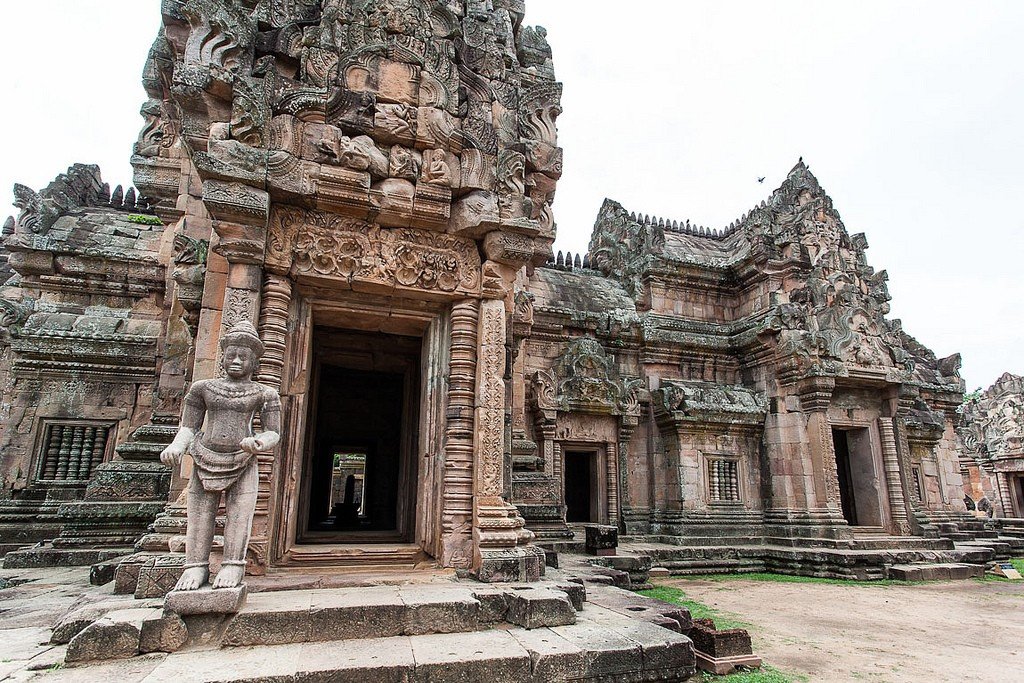
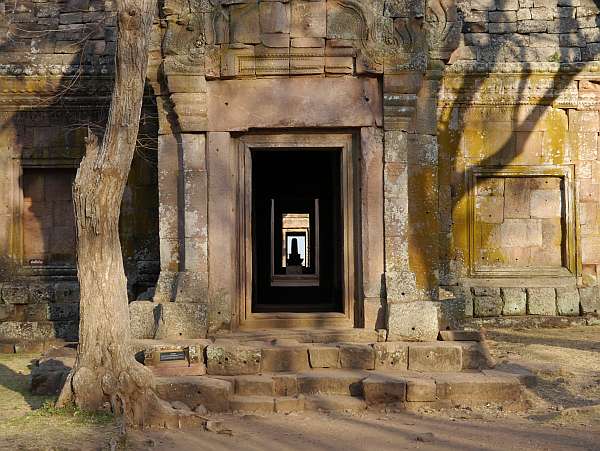
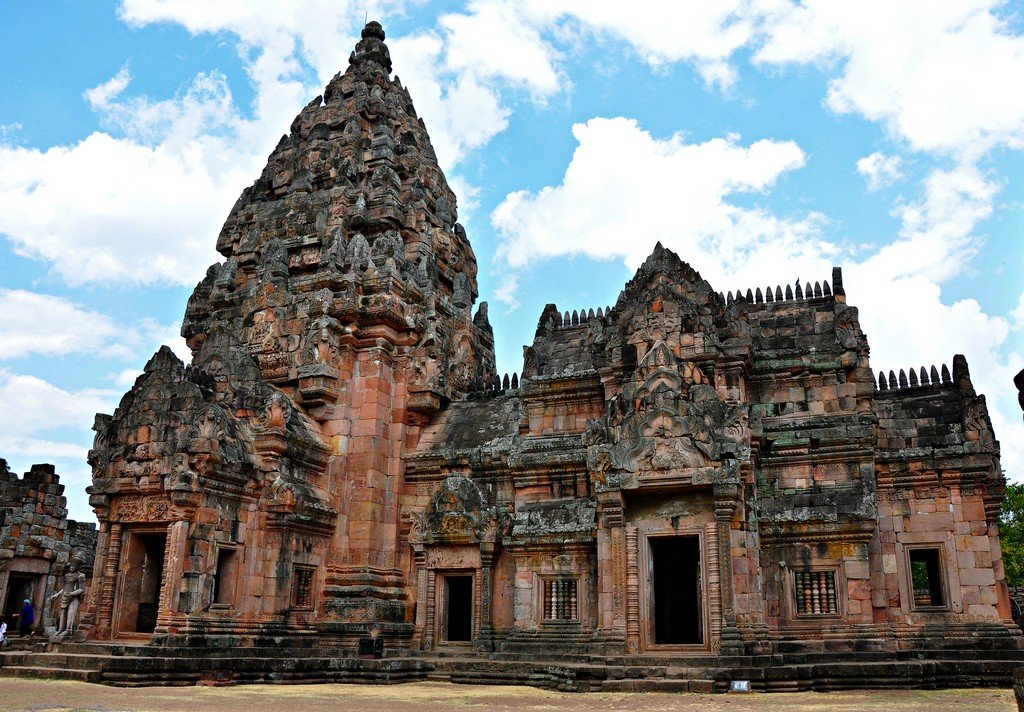
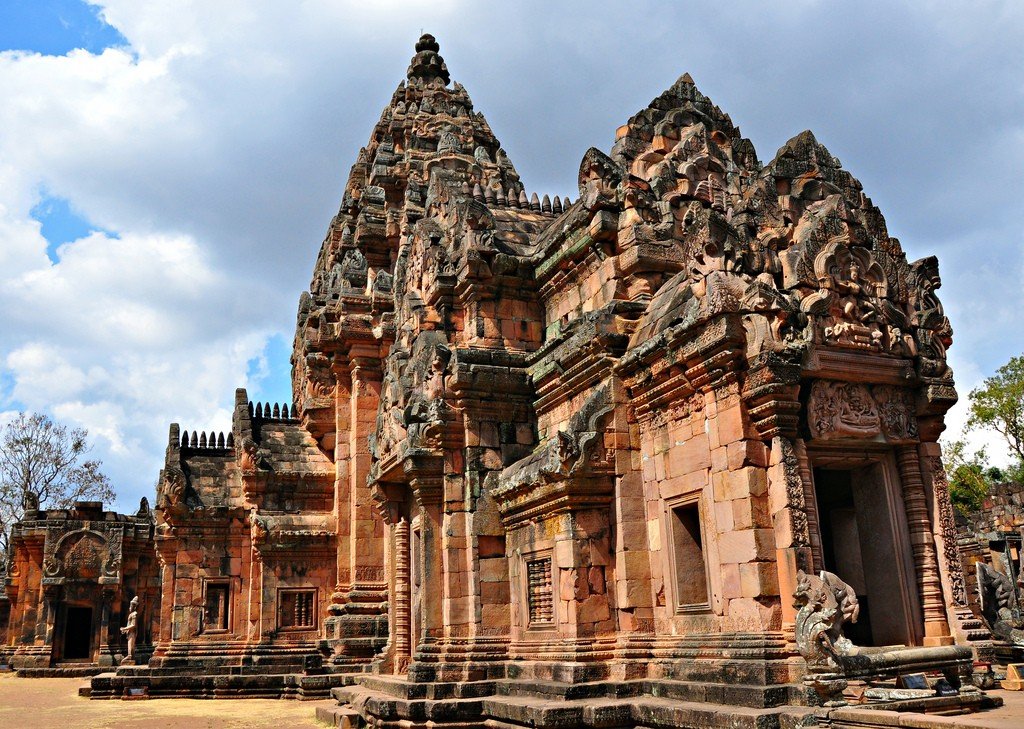
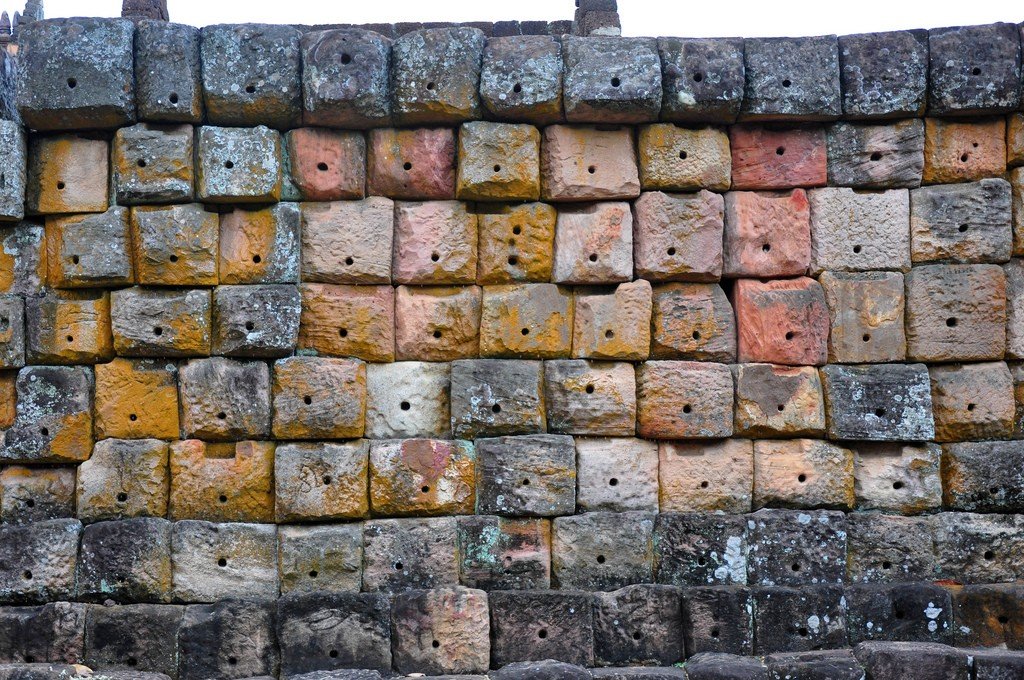
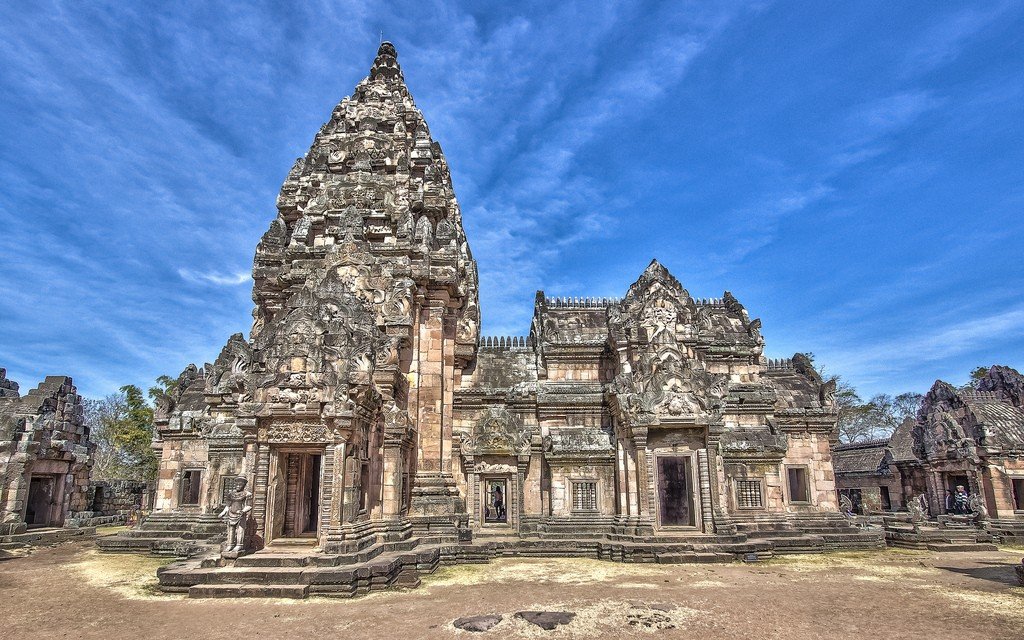
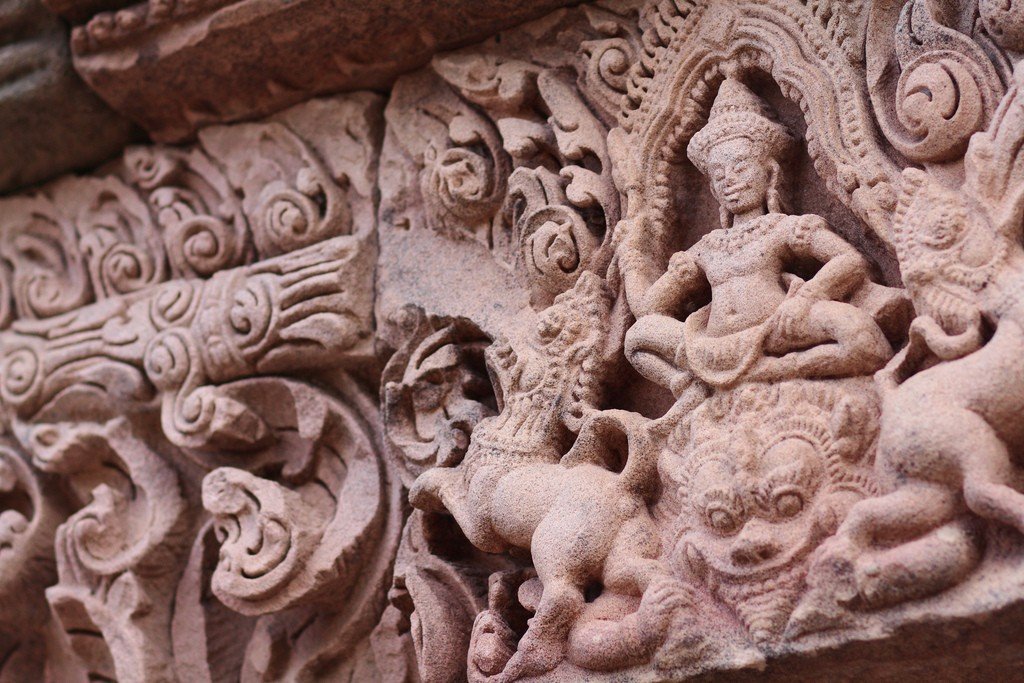
General information
The correct geometric shapes of the structures testify to the Khmer architect’s vigorous pursuit of expressiveness and imposingness. From the horseshoe-shaped building Rungchangphyak (White Elephant’s Stall), in front of which the remains of the walls are still preserved, a 12-meter-wide stone staircase and further along the road, bordered by stone pillars, the visitor comes to another monumental, divided into flights of stairs. It was built at right angles, like the wall that surrounds the site, later, in the XII century, under the Burmese king Suryavarman II. Sculptures at the entrance depict Hindu mythological scenes. Galleries stretch from the inner side of the wall, opening into the courtyard with cruciform propylaea and windows.
.The oldest buildings of Phanom Rung are three brick prangs, two of them still standing, though in a dilapidated state (10th century). Two laterite buildings on the sides of the main entrance were built in the 12th century, and the remains of a small sandstone prang with beautiful sculptures in the southwest corner have been rebuilt into a chapel.
The main sanctuary in its present form, a sandstone prang on a square platform built on top of a smaller prang, probably dates back to the 10th-11th centuries. The tower is surrounded on all four sides by gate towers (“gopura”) marking the entrance to the sacred precinct. The eastern ledge is continued by a corridor leading to an open hall of 8×10 meters (“man-dapa”). Each of the long sides has a portal and two windows. Sculptures (X-XI centuries.) on the pediments, door frames, walls and columns are characterized by high artistry. The depicted subjects are borrowed from Indian (Brahmanic) mythology. Above the eastern inner door of the sanctuary are the figures of five hermits, with one being larger than the others. The legend tells about a highly honored man who withdrew here from the world. For him and were built and the first buildings Phanom Rung.
On the territory of the sanctuary were found some very interesting ancient statues. They are on display in a nearby museum, a branch of Bangkok’s Department of Fine Arts in Phanom Rung.
During April’s Songkhram festival, celebrated nationwide, you can see a solemn procession to the temple and nightly candlelight dances. And on April 3, the sunrise is observed through all fifteen doors of the shrine from the west.
